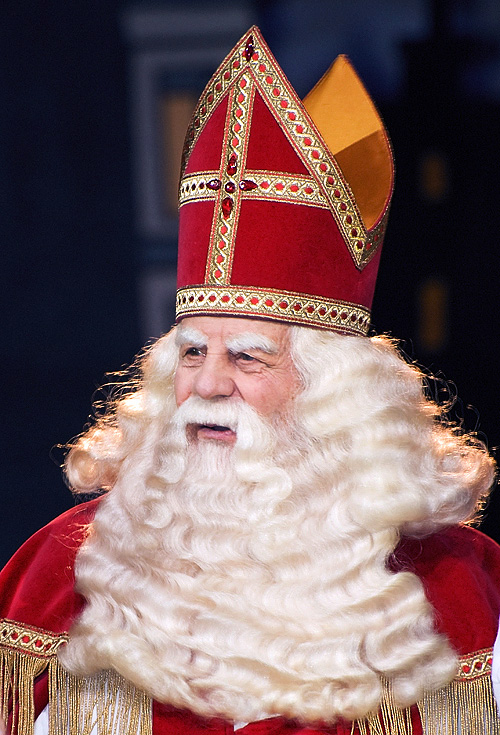December is here and as the song says: Here comes Santa Claus, Here comes Santa Claus, Right down Santa Claus lane… But where did Santa Claus come from?
It turns out that like the great “melting pot” of America, Santa Claus himself is a melting pot of different cultural traditions – born here in America somewhere around 1774 the Santa Claus we know and love descends from a combination of Christian, Germanic, Dutch, Norse, Scandinavian, and British folklore, traditions, and seasonal figures.
Saint Nicholas

The bearded Saint Nicholas was a 4th Century Greek Christian bishop renowned for his generosity towards the poor, traveling the countryside and often presenting them with gifts. His gift-giving and kindness became legend, so much so that during the Renaissance, St. Nicholas was the most popular saint in Europe.
Odin

13th Century Norse God Odin was commonly celebrated during the Germanic holiday of Yule (celebrated during December). Also bearded, Odin was said to lead a great hunting party through the sky during Yule while riding an eight-legged horse that could leap great distances. In some areas, children placed boots with carrots, straw, or sugar in them near the chimney for Odin’s horse. Odin, pleased with their thoughtfulness, would then fill their boots with gifts or candy.
Sinterklaas

In the 16th Century, the Dutch Sinterklaas is depicted as an elderly, serious man with white hair and long beard who wore a long red cape over traditional white garments. Keeping careful track of those who are “naughty” and those who are “nice”, Sinterklaas also distributes presents to children – gifts, chocoloate letters, candies, and spice nuts to those who had behaved and spankings for those who had not.
der Belsnickel
When Europeans from the Alps came to America and settled around Lancaster County, they brought with them many traditions – including der Belsnickel. der Belsnickel is a dirty, fur-covered, grumpy old man who wonders about town in the weeks before Christmas to interrogate the children to determine if they were naughty or well-behaved. Asking them to recite Bible verses or answer questions designed to determine their character and disposition – der Belsnickel punished those who didn’t pass the test with a swat of the wooden stick (or whip) he carried.
Father Christmas
 In the 15th Century, British carols began referencing a sire or lord of Christmas as a personification of the seasonal celebration, though the “jolly” rounded figure of Father Christmas wearing a long, green, fur-lined rob didn’t appear until the 17th Century when the somber Puritans were highly critical of Christmas traditions.
In the 15th Century, British carols began referencing a sire or lord of Christmas as a personification of the seasonal celebration, though the “jolly” rounded figure of Father Christmas wearing a long, green, fur-lined rob didn’t appear until the 17th Century when the somber Puritans were highly critical of Christmas traditions.
Those figures, as well as a number of traditions and celebrations surrounding them, are the foundation of the modern, American Santa Claus. But it wasn’t until cartoonist Thomas Nast came along in the mid-1800’s that the jolly old man bringing presents to children around the world on a reindeer sleigh became canonized as our very own American icon. Santa Claus.
